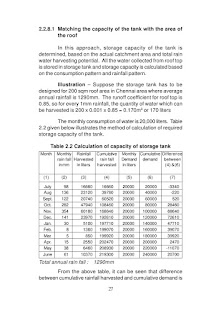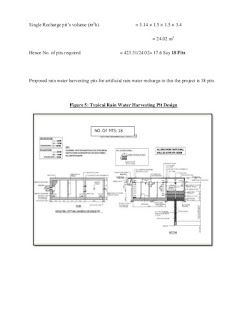Environmental Impacts from Meat and Fish Processing
Meat and fish processors must operate in a manner that protects human health and the environment while maintaining the highest food safety standards. If not minimized and properly managed, these operations can create enormous negative impacts on the environment. The primary environmental issues associated with meat and fish processing are water use, high-strength effluent discharge, and energy consumption. The meat and poultry processing industry (excluding rendering) uses an estimated 150 billion gallons of water annually. Although a portion of the water used by the industry is reused or recycled, most of the water becomes wastewater. Noise, odor and solid wastes are additional significant impacts that can detrimentally affect the environment if not adequately addressed.
The amounts and types of wastes generated depend upon a variety of factors including:
- animal type, size and shape;
- transportation and conveyance methods;
- receiving and handling of animals;
- processing times and technologies;
- amount of carcass washing;
- wash temperatures;
- cleaning/sanitation procedures; and
- rendering operations.
The information contained in this section includes environmental impacts for beef, pork, poultry and fish processing and associated rendering activities. The upstream processes of distribution and post-consumer packaging management are not covered. The manufacture of specialty meats and associated products are also not included in this topic hub. This sector focuses on activities that occur at a slaughterhouse and the related processes. The following table lists common wastes generated from specific processing areas.
Meat & Seafood Processing Area Wastes
| Process Area | Process Area Wastes |
| Meat |
| Transportation, receiving and holding | manure, hair, feathers, grit, mortalities |
| Slaughter | blood, fluids |
| Cleaning | feathers, skin, bone, hides, beaks |
| Bleeding | blood |
| Trimming and evisceration | trim scrap, offal, paunch material |
| Inspection | contaminated and rejected materials |
| Further Processing | meat scraps, cheeks, hides, feet, offal, bone and fat |
| Cooling and storage | contaminated ice, damaged product, off-spec inventory |
| Prepared foods | additives, oils, grease, sauces, damaged product |
| Fermented, smoked, pickled foods | spices, brines, sauces, spoiled materials, drippings |
| Seafood |
| Catch | by-catch |
| At-sea treatment | cuttings, bones, blood, off-spec product |
| Transport and marketing | off-spec, spoiled product |
| Receiving and thawing | Spoiled materials, thaw-water, melted ice |
| Butchering and processing, including canning | Off-cuts, viscera, bones, skins, suspended and dissolved solids, sauces, brines, fish oils other oils |
| Quarantine, storage and distribution | Off-spec. materials, spoiled materials, damaged cans |
Meat Processing Water Consumption: Like many other food processing activities, the necessity for hygiene and quality control in meat processing results in high water usage and consequently high wastewater generation. Volumes of wastewater from meat processing are generally 80-95 percent of the total freshwater consumption (MRC, 1995). The United Nations Environmental Program, Cleaner Production Assessment in Meat Processing (2000), estimates a range of 1,100 to 4,400 gallons of water are used per live weight ton of slaughtered animal in the United States. Between 44-60 percent of water is consumed in the slaughter, evisceration and boning areas (MRC, 1995). The following table illustrates the breakdown of water consumption in beef and pork processing based on a study of Australian abattoirs.
Water Consumption in Meat (Beef and Pork) Processing Operations
| Meat Processing Activity | Percent of Usage |
| Stockyard washdowns and animal watering | 7-22 percent |
| Slaughter, evisceration and boning | 44-66 percent |
| Casings production | 9-20 percent |
| Rendering | 8-38 percent |
| Domestic uses | 2-5 percent |
| Chillers | 2 percent |
| Boiler losses | 1-4 percent |
Meat Research Corporation (MRC), 1995
In poultry processing plants, in addition to being used for carcass washing and cleaning, water is also consumed for hot water scalding of birds prior to defeathering; in water flumes for transporting feathers, heads, feet and viscera; and for chilling birds. As a result, poultry processing tends to be more water intensive on a per unit production basis than red meat processing (Wardrop Engineering, 1998). Water consumption rates vary from 4,000 to 24,000 gallons per 1,000 birds processed (Hrudey, 1984).
Meat Processing Wastewater Generation: Freshwater consumption has a major impact on the volume and pollutant load of the resulting wastewater. Wastewaters generally have high organic loads and are also high in oils and grease, salt, nitrogen and phosphorous. At red meat abattoirs, water is used primarily for washing carcasses during the various process stages and for cleaning at the end of each shift. Eighty to 95 percent of water used in abattoirs is discharged as effluent (MRC, 1985).
The wastewater from a slaughterhouse typically contains blood, manure, hair, fat, feathers and bones and may be at high temperatures. Untreated effluent may be as high as 8,000 mg/L BOD with suspended solids at 800 mg/L or greater. The wastewater may also have pathogens, including Salmonella and Shigella bacteria, parasite eggs and amoebic cysts. Pesticide residues may be present from treatment of animals or their feed. Chloride levels may be very high (up to 77,000 mg/L) from curing and pickling processes. Cooking activities also greatly increase the fat and grease concentration in the effluent.
Fish Processing Water Consumption: Most seafood processors have a high baseline water use for cleaning plant and equipment. Therefore, water use per unit product decreases rapidly as production volume increases. Major sources of wastewater include: fish storage and transport; cleaning, freezing and thawing; preparation of brines; equipment sprays; offal transport; cooling water; steam generation; and equipment and floor cleaning.
Water consumption in fish processing operations has traditionally been high to achieve effective sanitation. Industry literature indicates that water use varies widely throughout the sector, from one to four gallons per pound of product. Several factors affect water use, including: the type of product processed, the scale of the operation, the process used, and the level of water minimization in place (Environment Canada, 1994a). General cleaning contributes significantly to total water demand so smaller-scale sites tend to have significantly higher water use per unit of production. Reducing wastewater volumes tends to have a significant impact on reducing organic loads, as these strategies are typically associated with reduced product contact and better segregation of high-strength streams.
Fish Processing Wastewater Generation: Wastewater from seafood processing operations can be very high in BOD, oil and grease, and nitrogen content. Literature data for seafood processing operations shows a BOD production of two to145 pounds of BOD per ton of product (Environment Canada, 1994a). White fish filleting processes typically produce 25 to 75 pounds BOD for every ton of product (UNEP, 1998). BOD comes primarily from the butchering process and from general cleaning and nitrogen originates -- predominantly from blood in the wastewater stream (Environment Canada, 1994a). Thawing operations can also account for up to 50 percent of the wastewater generated.
Rendering Wastewater Generation: Rendering, while it recovers raw materials for beneficial use, raises the production of high-strength wastewater. Similarly, other byproduct recovery such as offal collection and hide treatment increase wastewater generation. Conveyance by fluming, carcass cleaning and general cleaning and sanitation also create significant quantities of wastewater.
Organic loads can vary considerably depending on whether the site incorporates a rendering operation. Rendering plants, where installed, are the largest single source of wastewater contamination. The wastewater from rendering (often referred to as stickwater) contains approximately 60 percent of the plant�s total COD output while being typically only 10 percent of the volume (MRC, 1995). As a general rule, red meat abattoirs with rendering will generate approximately 100 pounds COD/ton HSCW (hot standard carcass weight)*, whereas operations without rendering will generate only about 30 pounds COD/ton HSCW (MRC, 1998).
Energy Consumption
Energy consumption depends upon the age and scale of the plant, level of automation, and range of products manufactured. Processes involving heating, such as cooking and canning, are very energy-intensive, whereas filleting requires less energy. Thermal energy, in the form of steam and hot water, is used for cleaning, heating water, sterilizing and for rendering. Electricity is used for the operation of machinery and for refrigeration, ventilation, lighting and the production of compressed air.
Like water consumption, the use of energy for refrigeration and sterilization is important for ensuring good quality meat and fish products. Storage temperatures are often specified by regulation. As well as depleting fossil fuel resources, the consumption of energy causes air pollution and greenhouse gas emissions, which have been linked to global warming. Typical ranges for energy use are 330 to 1330 kW per ton of hot standard carcass weight. Representative figures for ton of fish processed range from 65 to 87 kW for filleting, 150-190 kW for canning, and about 32 kW for fish meal and oil production. The following table provides a breakdown of electricity consumption at a meat processing facility.
Meat (Beef & Pork) Processing Energy Consumption
| Meat Processing Activity | Percentage of Usage |
| Refrigeration | 59% |
| Boiler Room | 10% |
| Rendering | 9% |
| Slaughter | 6% |
| Compressed Air | 5% |
| Boning Room | 3% |
| Others | 8% |
Energy Authority of New South Wales, 1985




































